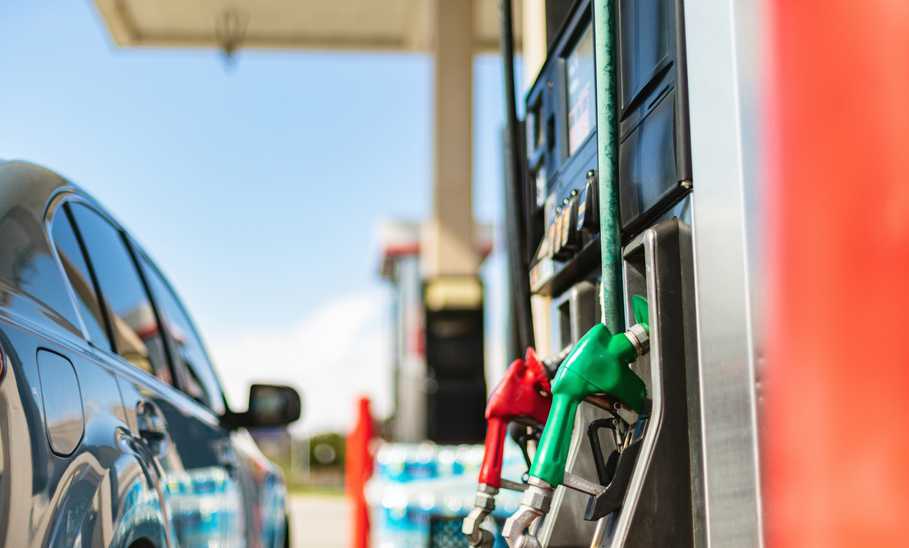Are Gas Prices Going Down?

Our evaluations and opinions are not influenced by our advertising relationships, but we may earn a commission from our partners’ links. This content is created by TIME Stamped, under TIME’s direction and produced in accordance with TIME’s editorial guidelines and overseen by TIME’s editorial staff. Learn more about it.
Gas prices are a key economic indicator for millions given that 91.7% of American households own one or more vehicles, many of which need to be filled with gasoline regularly. So the news that gas prices have edged down nationally is providing a bit of welcome relief as families and individuals plan their summer vacations.
Of course, gas prices are a complex calculation, and some states have lower prices than others. Here’s why—and where costs are lower.
In its latest report on gas prices, AAA cites lower demand and increased supply as the primary reasons for slightly lower gas prices. This has led to a national average of $3.50 per gallon in late June, a 9-cent decrease from earlier in the year and a 6-cent decrease from a year ago.
In the past, June was a month when families hit the road as the weather heated up and schools began their summer breaks. However, summer demand has been lower since the COVID-19 pandemic. We see this in Energy Information Administration (EIA) data, which shows the U.S. gas supply was over 9.7 million barrels per day in June 2019. The months of June in the two prior years saw similar supply numbers.
Fast-forward to June 2024, and the demand is 9.2 million barrels per day. Demand is inching closer to its pre-COVID numbers but has not fully recovered.
Total domestic gasoline stocks have risen, putting downward pressure on prices. For instance, domestic gasoline stocks were 219.5 million in the last week of June 2023. In the last week of June 2024, that figure was 231.7 million.
Gasoline stocks are important because they create a cushion between short-term supply and demand imbalances. In other words, the larger the stock, the less chance that supply won’t be able to keep up with demand. When stocks are low, prices tend to increase. But when stocks are high, gas prices are more likely to decrease.
Gas prices vary significantly by state. According to the most recent data from AAA, the states with the highest gas prices for regular gasoline are California ($4.79), Hawaii ($4.70), and Washington ($4.29).
The prices for mid-grade in those states are $5.00, $4.90, and $4.55, respectively. Premium gasoline prices are $5.18, $5.16, and $4.77.
At the high end of the price spectrum, the same states top the list regardless of the grade of gas. However, there is more variability at the bottom. For regular gas, the lowest prices are in Mississippi ($2.99), Louisiana ($3.07), and Arkansas ($3.08).
The lowest prices for mid-grade gas are in Mississippi ($3.40), Kansas ($3.42), Oklahoma ($3.44) and South Dakota ($3.44). The lowest prices for premium gas are in Kansas ($3.72), Oklahoma ($3.72), and Missouri ($3.76).
We have already discussed supply and demand, which are key gas price factors. However, the EIA lists four specific factors that affect the price of gas:
It isn’t surprising that these factors affect gas prices, but their specifics may be less obvious. For instance, how is the cost of crude oil determined? According to the EIA, seven factors affect crude oil prices, including spot prices, OPEC supply, non-OPEC supply, OECD and non-OECD demand, and financial markets. As an example, OPEC may decide to cut the oil supply, leading to increased gas prices.
Refining costs are also important. These costs vary seasonally and by region, partly because refineries must use different gasoline formulations to reduce air pollution in different parts of the country and in different seasons.
Distribution and marketing are also key factors, as they create a complex web of moving parts that can greatly affect costs. Some retail outlets are owned by refiners, while others are independent businesses. The bottom line is that the way gas gets to your car may vary, which can affect the price at the pump.
Finally, gas taxes are also a factor in the final cost. According to the EIA, the federal gas tax is 18.40 cents per gallon. State taxes averaged 32.44 cents a gallon as of January 1, 2024. Sales tax and local and municipal taxes can also affect the final price.
There are many types of gas, all of which have different properties. However, at most gas stations, the octane rating is the main difference between each type of gas.
Most modern vehicles can use regular unleaded gas. Regular gas has the lowest octane level, usually rated at 87.
This is the middle range among the different types of gas and usually has an octane rating of 89-90.
The highest-octane fuel, premium gas usually has an octane rating of 91-94.
The president can take actions to influence the U.S. gasoline supply, but they generally do not move the needle enough to impact prices. For instance, the Biden administration announced in May that it would release 1 million barrels (about 42 million gallons) of gasoline from a Northeast reserve just before the July 4 holiday.
But recall the supply figures discussed earlier. Currently, the domestic supply of gas is just above 9 million barrels. This means the announcement from the Biden administration equates to a fraction of the amount the U.S. consumes in a single day. Ultimately, such a small increase in the available supply is unlikely to impact gas prices greatly.
Gas prices have decreased across the U.S. due to factors like lower demand and increased supply. However, gas prices can vary significantly by state. Gas prices are a complex calculation influenced by global oil prices, among other factors. Prices also vary depending on the grade of gas you buy. Prices have dropped on average in the U.S., but your experience may be different depending on where you live.
Gas prices have fallen, on average, in California, as they have in other states. For instance, the average price for regular gas one month ago was $4.96. Conversely, the most recent average regular gas price in California was $4.79.
Several organizations maintain reports on gas prices. One of the best resources is AAA’s gas prices website, which usually publishes weekly reports showing whether prices are rising or falling.
The average gas station changes its prices a few times per week. However, there can be instances when a gas station might change its prices several times per day. Local gas prices may also affect whether a particular gas station changes its prices and how often.
The information presented here is created by TIME Stamped and overseen by TIME editorial staff. To learn more, see our About Us page.



